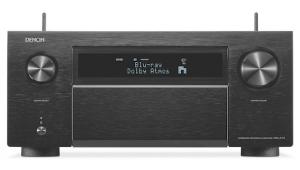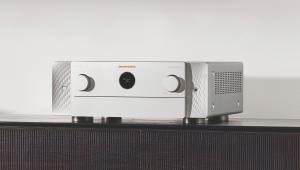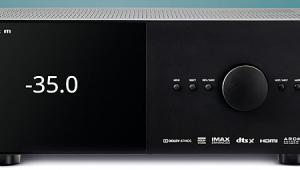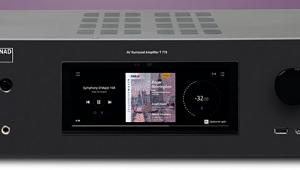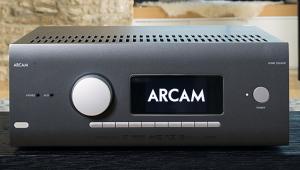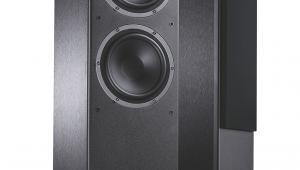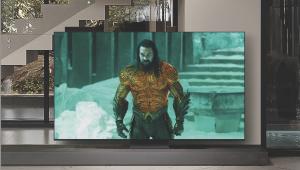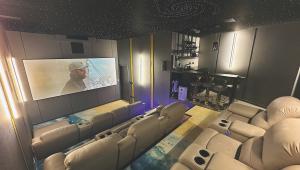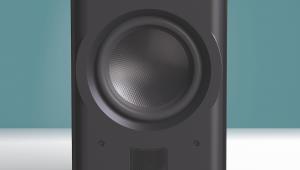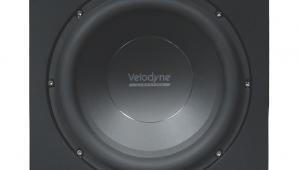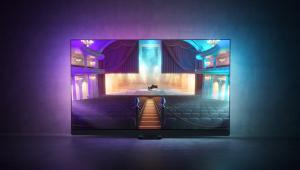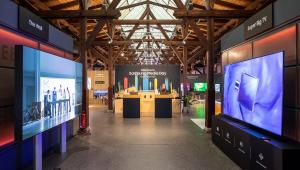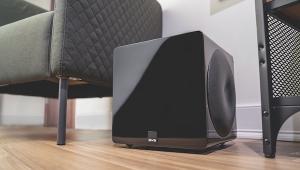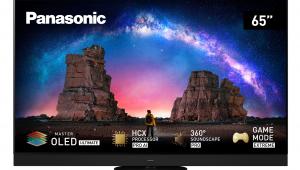Marantz Stereo 70s amplifier review

 Marantz continues to rethink the AV receiver with its Stereo 70s. Could the end of the soundbar be nigh, wonders Steve May?
Marantz continues to rethink the AV receiver with its Stereo 70s. Could the end of the soundbar be nigh, wonders Steve May?At first glance, this Marantz model looks much like one of the marque's conventional 'slimline' AV receivers. It presents a busy face to the world and has a back panel awash with HDMI inputs – but closer inspection confirms this is in fact a stereo receiver, offering no support for surround or centre speakers.
This isn't uniquely unusual for Marantz, as it previously released the NR1200, another HDMI-equipped two-channel receiver, in 2019. Yet the brand appears to be shouting a lot more loudly about this model, pitching it as a cinematic option rather than a well-connected hi-fi amplifier, and claiming improved connectivity and revised sound tuning.
Behind the Stereo 70s is the idea that traditional two-channel audio is back in fashion, and even speaking as a die-hard multichannel nutter, I can see the appeal. Combining the setup simplicity of a soundbar and the system-switching sophistication of a full blown 8K-capable AV amplifier, the Stereo 70s offers a seductively fresh take on home theatre. It's aimed at those who want to keep things simple, aren't impressed by the prospect of a multiplicity of speakers, and who maybe prioritise music over movies and TV.
System hub
Not that the Stereo 70s compromises when it comes to video. There are six rear-placed HDMI inputs, plus one output. The board is split evenly between 4K/120Hz and 8K capable inputs, and regular 4K/60Hz ports.
Much like its Cinema 70s stablemate, the 70s can upscale 1080p to 4K (and beyond to 4,320p, if you have an 8K display) and offers HDR passthrough including the Dolby Vision and HDR10+ formats.
Gamers are also accommodated by ALLM (Auto Low Latency Mode), VRR (Variable Refresh Rate) and QFT (Quick Frame Transport), so there are no qualms connecting a next-gen console.
When it comes to audio connectivity, the Stereo 70s offers a trio of assignable analogue stereo inputs, a phono turntable input (supporting MM cartridges), two USBs (one for media playback from a storage device and the other a USB power port for a streaming stick), and two digital audio inputs (one coaxial, the other optical).
There are also Zone 2 preouts and twin subwoofer phono outputs, plus FM/AM radio, Wi-Fi and Bluetooth (both supported by screw-in aerials), and an Ethernet port if you prefer your network hardwired.
Be 'appy
As you would expect from Marantz, the receiver is HEOS compliant, so you use the HEOS app to stream to it from various music services, plus internet radio and your own networked content. The app is also an option for switching between the receiver's physical inputs, and managing its integration within a larger ecosystem of HEOS hardware.
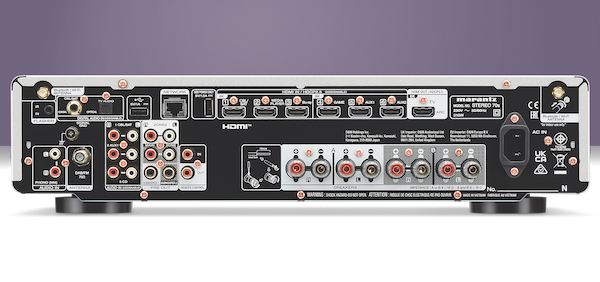
Want more smarts? The Stereo 70s supports Apple AirPlay 2, and is Roon Tested (although not 'Roon Ready'), while voice interaction covers Alexa and Google Assistant.
This all adds up to a solid specification, particularly given the unit's £899 price tag. And look around Marantz's wider range and the Stereo 70s becomes even more interesting, as the Japanese marque's only 'traditional' stereo amplifier with digital connectivity/networking is the £2,200 Model 40n, while its network-savvy CD 50n CD player is £1,600.
Like those new models, and the Cinema series AV receivers, this two-channel option comes with a distinctive fascia styling and OLED porthole display. It looks reassuringly premium and more 'on-trend' than Marantz's last-gen hardware, even with its old-school balance, bass and treble controls. To the right of these is a 6.35mm headphone jack, although you can also pair Bluetooth headphones so don't need to tie yourself up in cable knots.
While the receiver is a full-width (442mm) design, it's about half the height of the full-fat Cinema 50 reviewed here, and weighs in at a not particularly onerous 8.39kg.
Without a phalanx of speakers to connect and configure (although it has a twin-set of stereo speaker connections for speaker A/B listening or bi-wiring), the 70s is straightforward to setup. An onscreen guide prompts with simple, sequential, self-explanatory instructions, and the accompanying remote control, which is backlit, shouldn't confuse either.
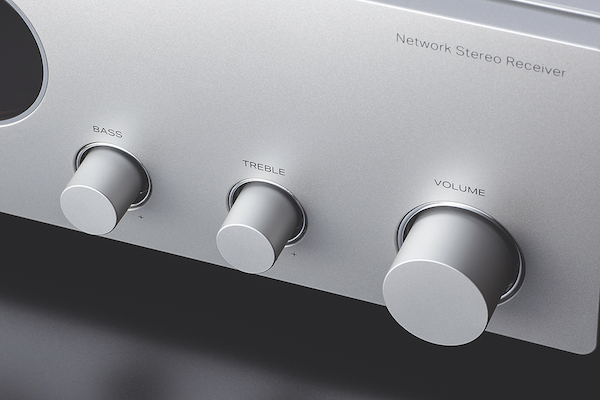
Unlike traditional AVRs or some stereo amps from NAD, Arcam and Yamaha, there's no auto-calibration mode here. You can, however, manually adjust speaker distances and levels to suit your listening room, correct lip-sync in millisecond increments, and adjust subwoofer level in 0.5dB steps.
You've got guts
The performance of the Stereo 70s is gutsy, its 2 x 75W (into 8ohm) power plant more potent than that of the also-slimline multichannel Cinema 70s model. Marantz's custom HDAM amplifier design lends the unit a familiar warm tonality.
Consequently, the 70s is a treat with music. CDs sound uniformly great, and hi-res audio even better. Lenny Kravitz's 'Are You Gonna Go My Way', streamed in 24-bit/96kHz FLAC, is astonishingly articulate, with a beautifully coherent soundstage and snappy attack.
The receiver conjures up a fully three-dimensional soundstage that gives instruments plenty of space. Switch to movie playback and there's an obvious caveat. With no Dolby Digital decoder on board, you'll need to set the HDMI audio output from your TV and connected sources, like a set-top box or streaming stick, to PCM (or 'Normal'), else you'll hear nothing at all.
Intriguingly, this opens the door to Netflix shows that stream with a Spatial Audio mix, and it proves a more layered listening experience than I was expecting. Designed to enhance stereo listening, Netflix Spatial Audio makes no discernible difference when heard on a TV or modest soundbar, but blooms into life with this 2.1 amplifier. The Stereo 70s has left me with a new appreciation of what Netflix is doing with the technology. Army of Thieves, the (safe) cracking prequel to Zack Snyder's Army of the Dead, is one such offering.
The intro sequence, with its scene-setting opening narration positioned above a bedrock of ominous grinding gears, is clearly enriched by extra dimensionality. The film's Hans Zimmer score also plays wide, and dialogue always appears to be locked centrally, even though there's no centre speaker in play.
When it comes to deep movie bass, the Stereo 70s gets a little messy, however. While it can drop low, it lacks the LFE precision I'm used to from Dolby soundtracks. You can set the low-pass filter at various levels between 40Hz and 250Hz (the default is 80Hz), and while this is fine I found the result a little unrefined.
Personally, I would have liked the amp to have a Dolby Atmos decoder. Not that I expect any immersive bonus, but the system would then be gifted the smarts to intelligently direct a true LFE signal to the sub, and Dolby Atmos can (down)scale to whatever speaker configuration is connected.
No doubt, Marantz will counter that I'm missing the point, and it may well be right. After all, there's no doubt that the 70s offers an appreciable level of transient attack. The nuclear conflagration that opens Terminator Genisys (Blu-ray) has tangible weight, and as the flying machines hove into view, I'm impressed at just how much travel there is across the soundstage. When Arnie jumps back in time, the crackle of blue lighting that heralds his arrival is crisp and authentically electric. As the battle against Skynet rages, I'm fully enthralled, and barely notice the lack of surround FX.
Flexible friend
The Stereo 70s is a very entertaining stereo AV receiver that makes a fine alternative to an upper-tier soundbar. The sheer wealth of connectivity, including HFR and 8K-capable HDMI, plus HEOS streaming, makes it impressively flexible. It's also tremendously musical for the price, capable of some lovely top-end detail with a melodious midrange.
Like Arnie, Marantz has itself jumped back in time, and created an alternative home cinema experience, albeit one free from the complexities of multichannel sound. For those looking to replace an existing stereo amp or soundbar, to better integrate it with a growing shelf of HDMI-enabled gizmos, this is a brilliant buy.
HCC Verdict: 4.5/5
Marantz Stereo 70s
Price: £899
www.marantz.com
We say: This stylish receiver makes a virtue of its stereophony, delivering a two-channel performance rich in detail and nuance. Inputs cater to movie fans, music lovers and gamers alike!
Specifications
DOLBY ATMOS: No DTS:X: No IMAX ENHANCED: No MULTICHANNEL INPUT: No. MULTICHANNEL PRE-OUT: No MULTICHANNEL OUTPUT (CLAIMED): 2 x 75W (8ohms, 20Hz-20kHz, 0.08% THD) MULTIROOM: Yes. Zone 2 audio HDMI: Yes. 6 x inputs and 1 x output AV INPUTS: 2 x digital audio (1 x optical and 1 x coaxial); 3 x analogue stereo DIMENSIONS: 442(w) x 109(h) x 375(d)mm WEIGHT: 8.4kg
FEATURES: HDMI eARC; HDMI 2.1 inputs supporting VRR, ALLM and 4K/120 (8K/60) passthrough; Dolby Vision/HDR10+ passthrough; HEOS streaming/multiroom integration; Apple AirPlay 2; TuneIn; hi-res audio playback (192kHz/24-bit; DSD 5.6MHz); MM phono input; USB-A port; Wi-Fi; Ethernet; two-way Bluetooth; 2.2-channel pre-out (RCA); Pure Direct mode; bass/treble tone controls; A/B speaker terminals
 |
Home Cinema Choice #351 is on sale now, featuring: Samsung S95D flagship OLED TV; Ascendo loudspeakers; Pioneer VSA-LX805 AV receiver; UST projector roundup; 2024’s summer movies; Conan 4K; and more
|






